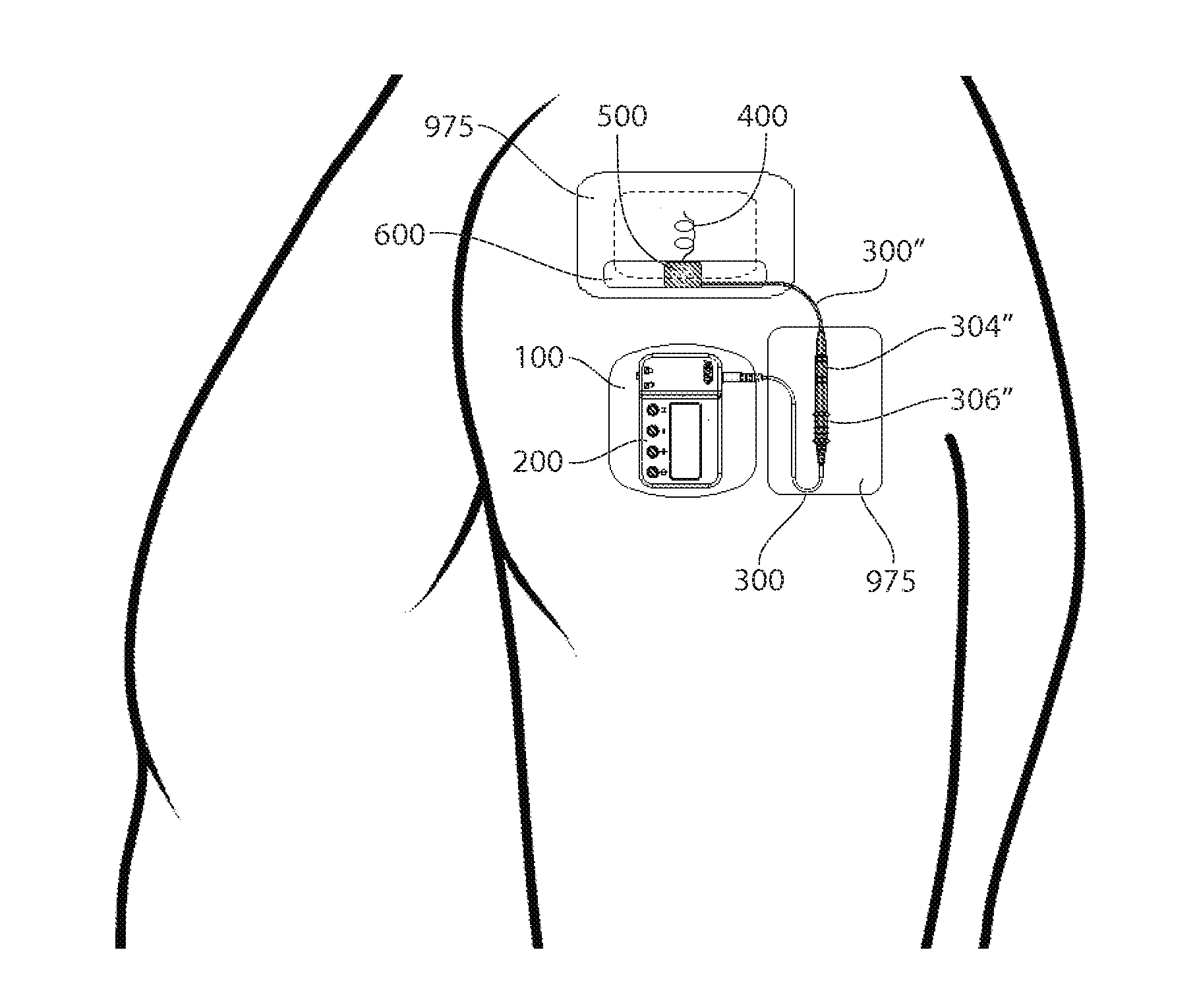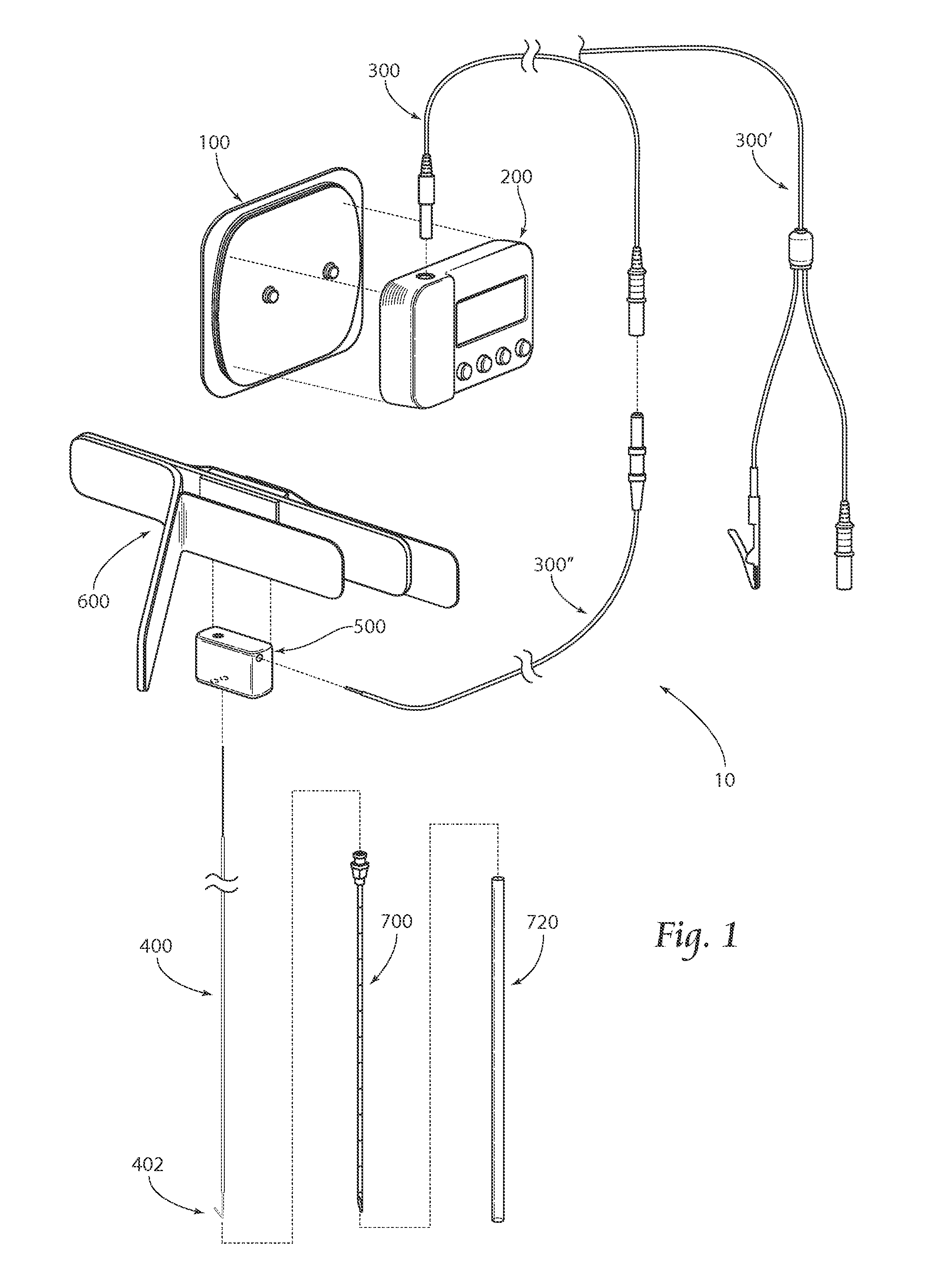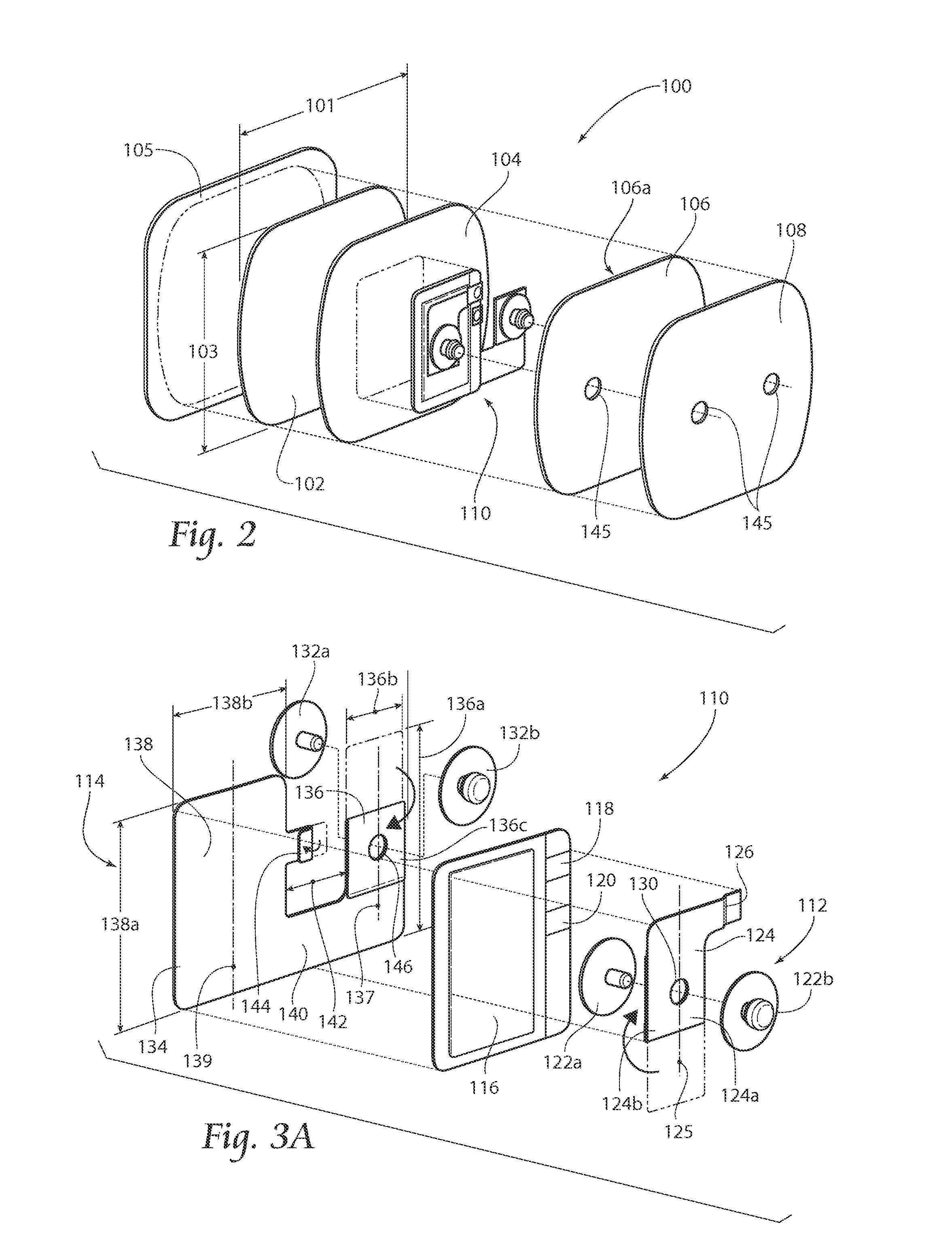Systems and methods for percutaneous electrical stimulation
a technology percutaneous electrode, applied in the field of percutaneous electrical stimulation, can solve the problems of difficult to meet the needs of patients, etc., and achieve the effect of not being mated easily
- Summary
- Abstract
- Description
- Claims
- Application Information
AI Technical Summary
Benefits of technology
Problems solved by technology
Method used
Image
Examples
embodiment 200
[0055]Turning now to FIGS. 4A-5, an embodiment 200 of an electrical stimulator according to the present invention may be described. Generally, the stimulator 200 includes a housing 201 having a cover 202 and a base 204. The housing 201 generally forms a cavity 203 that is configured to at least partially contain a printed circuit board 206 on which electrical stimulation generation circuitry may be mounted. Generally, the housing 201 extends between and includes a front surface 208 and an opposed back surface 210, a top surface 212 and an opposed bottom surface 214, and a left surface 216 and an opposed right surface 218. The housing 201 may have a plurality of apertures or passageways 205 formed therethrough, allowing access to the cavity 203, either functionally or physically. Functional access may be provided to a user output interface, such as a display screen 220, or to a user input interface, such as one or more buttons or keys 222a,222b,222c,222d. Physical and / or functional a...
embodiment 300
[0088]FIGS. 9-11 depict various cable embodiments 300 according to the present invention. A first cable embodiment 300, shown in FIG. 9, generally includes a single conductive path extending between and including a first connector element 302 and a second conductor element 304. The first connector element 302 is preferably a touchproof pin connector having a conductive pin of a first diameter, such as about 1.0 millimeter. The second connector element 304 is preferably also a touchproof pin connector having a conductive pin of a second diameter, which is preferably different from the first diameter, such as being greater than the first diameter. The second diameter is preferably about 1.5 millimeters. The provision of different connector pin diameters is preferred to aid in preventing reversal of the cable 300 during use. Additionally, the first connector element 302 may be provided as a first color, such as a color that corresponds to a color of the stimulator housing 201, such as ...
PUM
| Property | Measurement | Unit |
|---|---|---|
| time | aaaaa | aaaaa |
| thickness | aaaaa | aaaaa |
| thickness | aaaaa | aaaaa |
Abstract
Description
Claims
Application Information
 Login to View More
Login to View More - R&D
- Intellectual Property
- Life Sciences
- Materials
- Tech Scout
- Unparalleled Data Quality
- Higher Quality Content
- 60% Fewer Hallucinations
Browse by: Latest US Patents, China's latest patents, Technical Efficacy Thesaurus, Application Domain, Technology Topic, Popular Technical Reports.
© 2025 PatSnap. All rights reserved.Legal|Privacy policy|Modern Slavery Act Transparency Statement|Sitemap|About US| Contact US: help@patsnap.com



